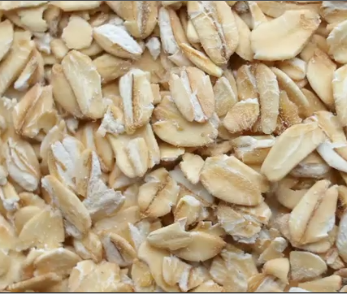Sodium Lauroyl Oat Amino Acids iis a mild surfactant derived from the amino acids found in oats.
Name breakdown and function of the components
- Sodium - Refers to the sodium element.
- Lauroyl - Refers to lauric acid, a 12-carbon fatty acid.
- Oat - Pertains to oat.
- Amino Acids - Refers to amino acids, the basic building blocks of proteins.
Description and function of the raw materials used in production
- Oat amino acids - Extracted from oat protein, they offer emollient and moisturizing properties.
- Lauric acid - A fatty acid that provides the "lauroyl" part of the compound.
Summary of the industrial synthesis process step by step
- Extraction - Amino acids are extracted from oat protein.
- Reaction - The extracted amino acids react with lauric acid in the presence of a base (e.g., sodium hydroxide) forming the sodium salt of the lauroyl oat amino acids.
- Purification - The resulting product is purified to remove impurities and obtain the desired surfactant.

What it is for and where
Cosmetics
Antistatic agent. Static electricity build-up has a direct influence on products and causes electrostatic adsorption. The antistatic ingredient reduces static build-up and surface resistivity on the surface of the skin and hair.
Cleansing agent. Ingredient that cleanses skin without exploiting the surface-active properties that produce a lowering of the surface tension of the stratum corneum.
Hair conditioning agent. A significant number of ingredients with specific and targeted purposes may co-exist in hair shampoo formulations: cleansers, conditioners, thickeners, matting agents, sequestering agents, fragrances, preservatives, special additives. However, the indispensable ingredients are the cleansers and conditioners as they are necessary and sufficient for hair cleansing and manageability. The others act as commercial and non-essential auxiliaries such as: appearance, fragrance, colouring, etc. Hair conditioning agents have the task of increasing shine, manageability and volume, and reducing static electricity, especially after treatments such as colouring, ironing, waving, drying and brushing. They are, in practice, dispersants that may contain cationic surfactants, thickeners, emollients, polymers. The typology of hair conditioning agents includes: intensive conditioners, instant conditioners, thickening conditioners, drying conditioners. They can perform their task generally accompanied by other different ingredients.
Skin conditioning agent. It is the mainstay of topical skin treatment as it has the function of restoring, increasing or improving skin tolerance to external factors, including melanocyte tolerance. The most important function of the conditioning agent is to prevent skin dehydration, but the subject is rather complex and involves emollients and humectants that can be added in the formulation.
Surfactant - Cleansing agent. Cosmetic products used to cleanse the skin utilise the surface-active action that produces a lowering of the surface tension of the stratum corneum, facilitating the removal of dirt and impurities.
CAS 222400-43-3
Commercial applications
Skincare products: Due to its soothing properties, it's often used in products intended for sensitive or irritated skin.
Cleansing products: Acting as a surfactant, it's utilized in cleansers, soaps, shampoos, and bath products to aid in lifting and removing dirt and oil.
Haircare products: Found in certain shampoos and conditioners, especially those formulated for sensitive hair.
Properties
Surfactant: Helps to emulsify and distribute water-insoluble ingredients in products.
Soothing: Oat amino acids have soothing properties and can help calm irritated skin.
Mild: Being an amino acid-derived surfactant, it tends to be gentler on the skin compared to other synthetic surfactants.
Sodium Lauroyl Oat Amino Acids studies
![]() Sodium Lauroyl Oat Amino Acids
Sodium Lauroyl Oat Amino Acids 



